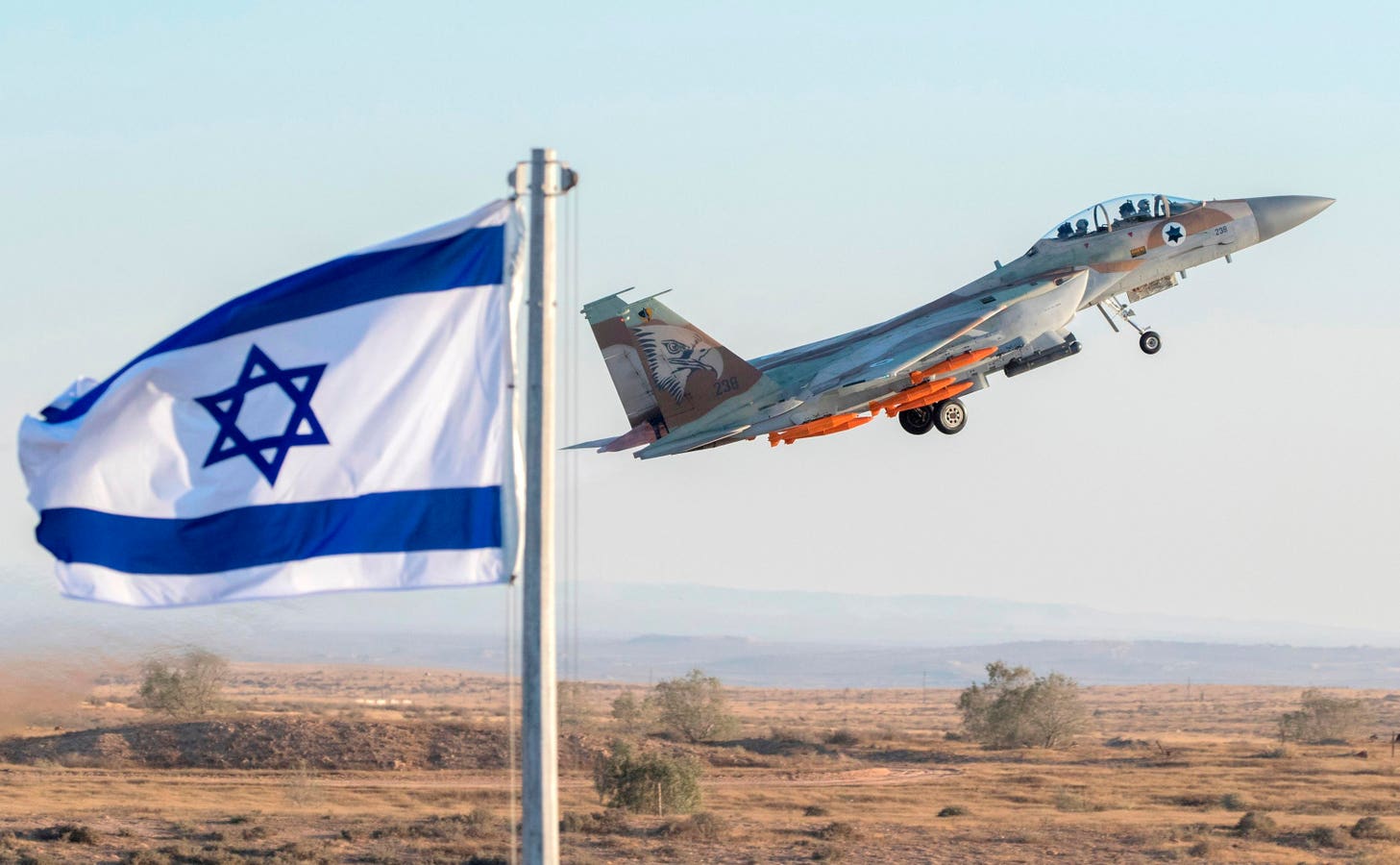Until last Friday, a sizeable number of Israeli military reservists including pilots were on strike, protesting judiciary reforms. Is Israel’s air force weaker as a result?
Last spring, small numbers of personnel in Israel’s large military reserve force began to protest against the government’s plans to overhaul the judiciary by failing to report for training duty. By late last summer, their numbers had grown to as high as 10,000 reservists. Among them were a considerable number of the IAF’s 400 reservist pilots, some 300 of whom are fighter pilots.
The protests abruptly ended last weekend as Israeli reservists at home and abroad flocked to service after the government called up roughly 360,000 reservists to join the fight against Hamas and bolster defense of its northern border with Lebanon from threats by Hezbollah.
But just two months ago the chief of the Israeli Air Force, Major General Tomer Bar, warned that the Israeli Air Force’s readiness was “worsening.” Bar issued that warning as he met with a group of striking reservists earlier in August, urging them to return to training.
Military service is compulsory in Israel. With a few exceptions, upon turning 18 Israeli men serve for approximately three years and women for two years. Following regular military service, they are assigned to the reserve and can be called upon to serve periodically until the age of 40.
IAF pilots have longer service commitments and when they enter the reserve force, drill and train more frequently (up to one day per week) than most of their Israeli Defense Force counterparts.
The disruption to ongoing IAF reserve pilot drilling as a result of the protest became a concern acute enough that in early October, days before issuing a letter marking the 50th anniversary of the Yom Kippur War, Maj. Gen. Bar gave protesting pilots a two-week deadline to return to volunteer service or risk being deemed unfit to continue flying and potentially dismissed from the military.
The Times of Israel earlier cited an Israeli news source which reported that Bar said that the protesters’ absence was most being felt by training and drill squadrons as well as operational and air control units. The IAF reportedly warned that training replacements for striking reservists would hurt plans for large-scale exercises in the fall.
Those exercises have been replaced by conflict and the question of lower IAF operational readiness has taken on new urgency. I reached out to the IAF through the Israeli embassy in Washington, DC and to another source inside Israel. Neither has so far commented on degraded readiness in connection with the protest.
Those who might provide an assessment are obviously busy and even if they were able and willing, they would likely struggle to qualify the impact the protest has had on the IAF American Enterprise Institute senior fellow, Kenneth M. Pollack says.
“Did the protests and the lack of flying hours have an impact? My guess is they did. How meaningful was that? I’m skeptical that it has had an impact on anything we’ve seen so far.”
Pollack, who researches Middle East political-military affairs, bases his assessment partly on the nature of Israel’s response to the attacks in Gaza thus far. The terrorist savagery seen in that relatively small, dense urban landscape is difficult to effect using airpower, even airpower with precision munitions, he points out. As such, the IAF has played a limited role to date, potentially giving it time to reintegrate key personnel.
The state of IAF readiness may become more obvious if Hezbollah decides to enter the conflict in a significant way. Hezbollah is much more skilled militant group than Hamas. It has been Israel’s most formidable foe since its inception in the early 1980s. Today it has amassed huge numbers of rockets and missiles (including anti-air missiles) and significant cyber capability thanks to Iranian patronage.
Hezbollah intervention would challenge both the IAF’s aircrew skills and its combined arms acumen, Pollack observes.
“Given the extent to which Hezbollah is bunkered-in on the ground, the impact of the IAF is likely to be lessened. In 2006 [when Israel fought month-long war in Lebanon] there was an expectation that the IAF could [defeat Hezbollah] on its own. The Israelis found out they couldn’t.”
Part of that was because of a breakdown in air-ground cooperation between the army and air force, Pollack explains. “The Israelis had gotten so far away from the combined arms operations that they had practiced brilliantly from 1967 through 1982.”
The IAF re-emphasized combined arms doctrine during the late-2000s and in the decade leading up present, but Pollack adds, “It’s one thing to recognize a problem. It’s one thing to train to compensate for that problem. It’s something else entirely to actually put it in practice.”
Doing so requires fresh, consistent training. Reserve pilots who have missed it, and whose absence has affected the IAF’s pilot training pipeline, may not be able to simply jump back into the cockpit.
“Pilots need to train regularly, really regularly,” Pollack says. “I’ve heard from any number of them that it’s surprising how fast you can get rusty with very sophisticated jets, especially with 4th generation fighters.”
More advanced 5th generation aircraft like the IAF’s F-35I may require less stick and throttle skill but, like their counterparts, require pilots to be current experts in employing their weapons systems – a perishable skill that can be harder to refresh than physical flying.
“The longer you’re not in the cockpit, the longer you’re not flying, the longer it takes to shake off the rust. The lack of flying hours [for protesting pilots] has had an impact. How meaningful is it? I don’t know the answer and I’m not sure it is knowable until we really start to see them in action.”
Perhaps the lesson for the IAF or any top tier air force is that they need a bench that is deep, a substantially sized pilot/aircrew population that can withstand disruption and still function as expected whether the hiccup is political disarray, internal strife or combat losses.
The concern that the IAF (and the IDF) may not have a deep bench is now a real one. “We’re going to see what impact this has on the Israelis. Israel is different,” Pollack says. “They are a society that is constantly at war. They’ve been good at having a reserve with depth.”
It extends just as urgently to America’s own Air Force and other services Pollack agrees.
“What I see in terms of how we [the U.S.] are treating the Armed Services, how we are taking for granted their capabilities is a very dangerous path. I worry that we don’t have the margins the Israelis have. We may find out that Israel has already punched through those margins.”
Read the full article here





